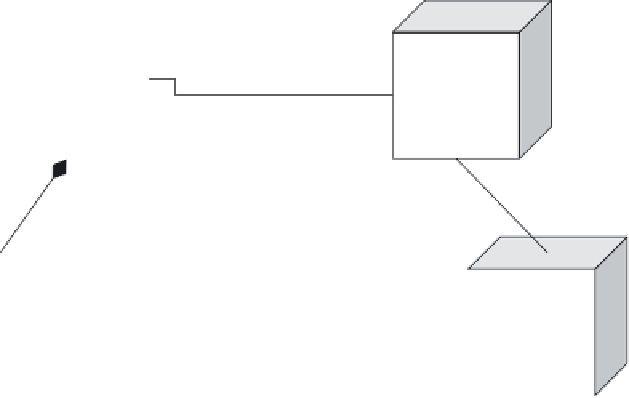Java Reference
In-Depth Information
The employees are identified by a code and a name, in addition they have
a password to enable their authentication when they activate a terminal in
the Connect use case. The customers are identified only by a code and a
name, since they do not interact directly with the system. Products are
described by a code, a name, a price and the available quantity in the store.
The physical structure of the system can be described with the deploy-
ment diagram shown in Figure 14.2. Each counter terminal is connected to
a bar code reader. Terminals are linked to the central server through an
ethernet LAN, the usual standard network protocol for this kind of network
is TCP
IP. The central server accesses information stored in a database.
Since the all the counter terminals share the same network connection to
the central server, the application level protocol for the interaction between
the terminals and the central server must be as simple and lightweight as
possible. In addition the protocol must be implemented with low computing
resource demands. This is due to the fact that low-cost PCs are used as
counter terminals.
14.2.1
Domain models
An important issue in a large distributed system such as this supermarket
operation support system is its scalability. It is crucial to know the
maximum number of terminals that can be added to the system without
degrading its performance. On the central server side the problem can be
solved (to a certain extent) by upgrading the hardware. The performance
bottleneck in this case is the shared network connection between the
terminals and the server. Thus it is important to analyse the characteristics
of the communication protocol and the influence it has on the data
throughput.
Counter
terminal
Central
server
TCPI/IP
*
1
1
JDBC
1
1
1
Bar code
reader
Market DB
Figure 14.2
Supermarket physical architecture





